Bucatini Pasta with Amatriciana Sauce
When you are in the food game, you never really know what is going to happen when you discuss your kitchen secrets that veer from tradition. It turns out that you can have a whole town speaking out against you. This is what happened in Italy anyway to Chef Carlo Cracco. Chef Cracco, it seems, let slip while on TV that he used a little garlic in his Bucatini Pasta with Amatriciana Sauce. This raised the ire of the council and citizenry of Amatrice, the birthplace of the very famous and very tasty Bucatini a’lla Amatriciana. A “lapse in judgement” they called Chef Cracco’s actions. How could he ignore almost 1000 years of history? The war on Christmas be damned. The war on Bucatini Pasta and the ever classic Amatriciana Sauce, whose recipe has been passed down from generation to generation, is raging and it is time for everyone to decide where they stand. Other chefs in Rome stood with the Amatrice council, running Chef Cracco through the proverbial pasta machine so to speak stating that the main flavor should be that of the guanciale – a sort of bacon made from the pork jowl. It then was revealed that they secretly serve the sauce with other shapes of pasta because bucatini pasta is messy. Another subtle slap in the pasta pot, even from supporters. The war is on.
But it turns out that the slope is a slippery one. At the Amatriciana festival in Amatrice, some people use spaghetti. The shepherds of Amatrice past are rolling in their graves. What’s next, ziti being used with arrabiata sauce instead of penne? Linguine bolognese? Plain red plates with no graphics at the local pasta restaurant?
I have seen the war first hand. How many times I have entered an Italian restaurant only to find the Bucatini a’lla Amatriciana made with pancetta or, even worse, bacon (they do this in Britain a lot – ugh. What is worse is that they think it is good!). How dare they. Not just because it isn’t guanciale, but because, for those who don’t know, guanciale is 1000 times more tasty. The porky goodness that guanciale brings to the dish is incredible when married to tomato and pecorino and just a dash of chilli flake. And, although unruly, bucatini is a natural for this sauce. I can’t identify why. It is just something you know deep down. Like food porn, you know it when you see it.
I must say that I understand the passion because Bucatini a’lla Amatriciana is one of the tastiest pasta dishes ever.
You will have to decide on what side of the war you are. Should Chef Cracco be licking his wounds or should he be proud? That is up to you. But we can’t know anything without knowing how to make the classic and what it tastes like. And since I don’t want to run afoul of the good folks in Amatrice, here is how to make the classic Amatriciana sauce with Bucatini Pasta.
- 1 lb of bucatini pasta
- 1/4 lb of guanciale
- 1 tsp of red chilli flake
- 1 8oz can of whole tomatoes
- 1 splash of white wine
- olive oil
- salt and pepper
- 1/4 lb of grated pecorino cheese plus extra
- Dice the guanciale into small cubes.
- In a large saute pan, heat 3 tbsp of olive oil over medium heat. Add the guanciale and chilli flake.
- Saute the guanciale until the fat starts becoming transparent and the meaty parts just start to brown - about 5-6 minutes.
- Stir in the tomatoes allowing them to break up as they cook.
- Add the splash of wine.
- Let the sauce simmer until the it has thickened.
- Season the sauce with salt and pepper.
- Fill a large pot with water and bring it to boil. When the water is boiling, add the pasta and cook it al dente as directed by the manufacturers instructions.
- When the pasta is done, drain it well.
- Place the pasta in a large bowl and toss the noodles together with the cheese.
- Top the pasta with the sauce and serve it with extra pecorino.
- Guanciale is a cured pork jowl meat. It can be found at your local Italian deli or salumeria.
- The people of Amatrice recommend tomatoes from San Marzano, but any canned tomato should do.
Keep Eating! Keep Innovating!
Have you ever had Bucatini a’lla Amatriciana? Let us know all about it in the comments or on Facebook.
The Culinary Exchange can also be found on Twitter, Instagram, Pinterest, Google+ and YouTube.
Come On! Follow Along!

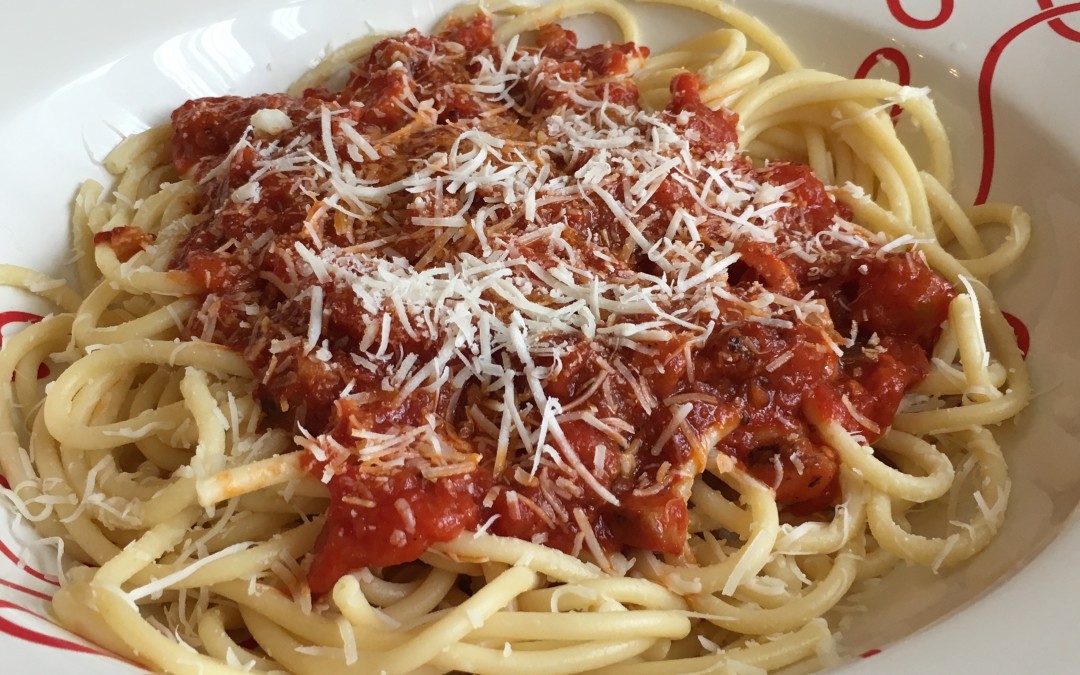

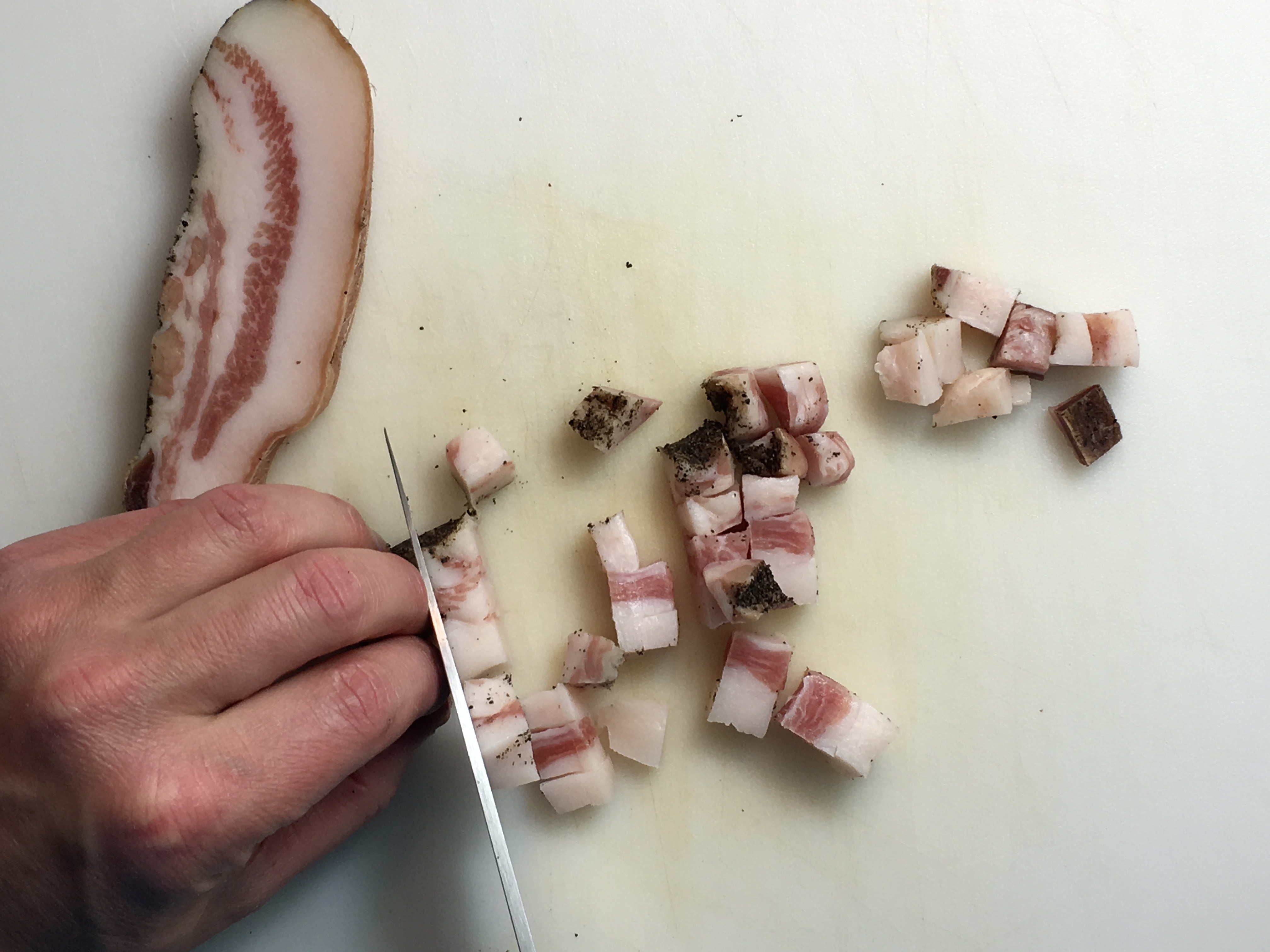

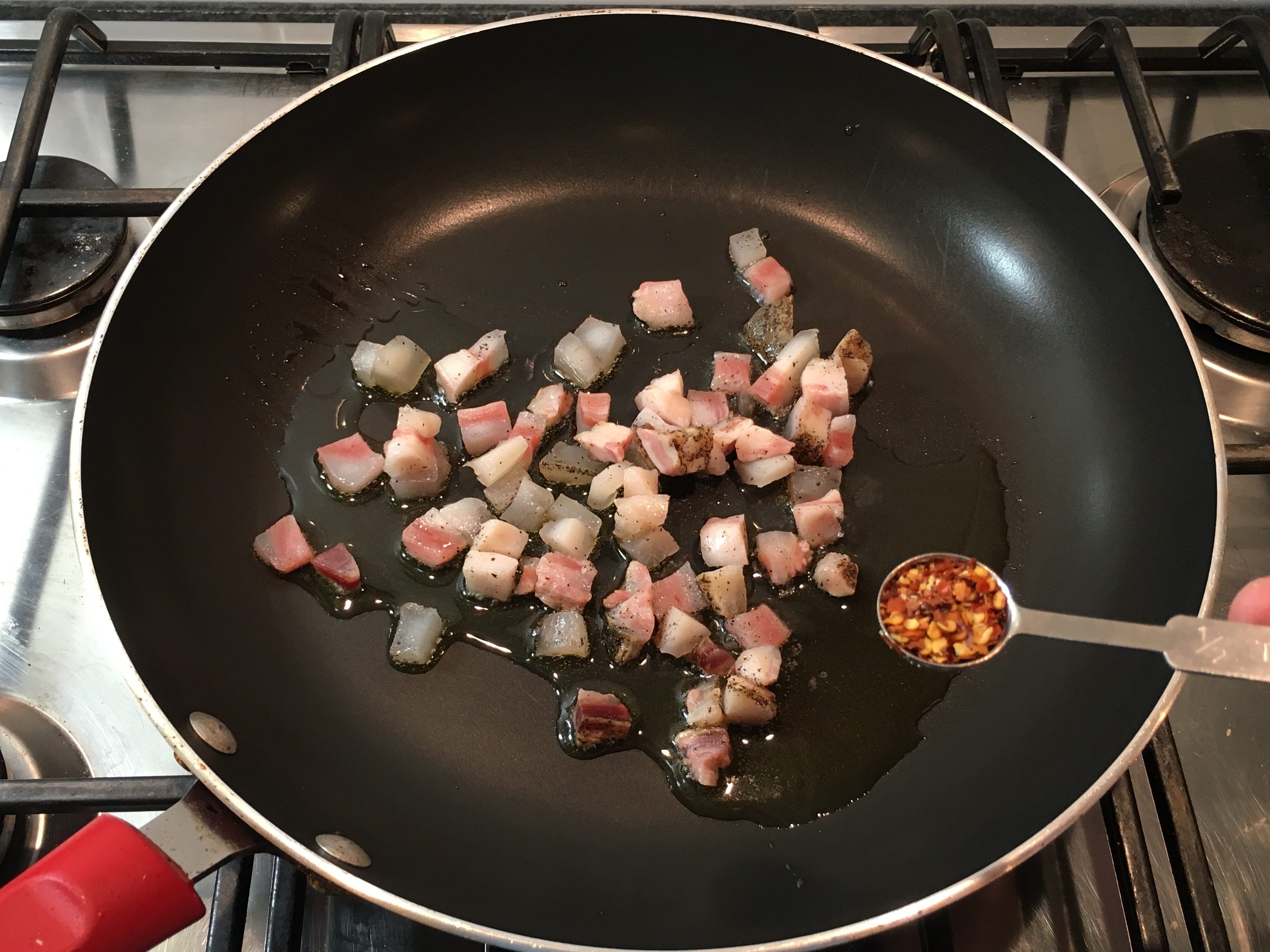

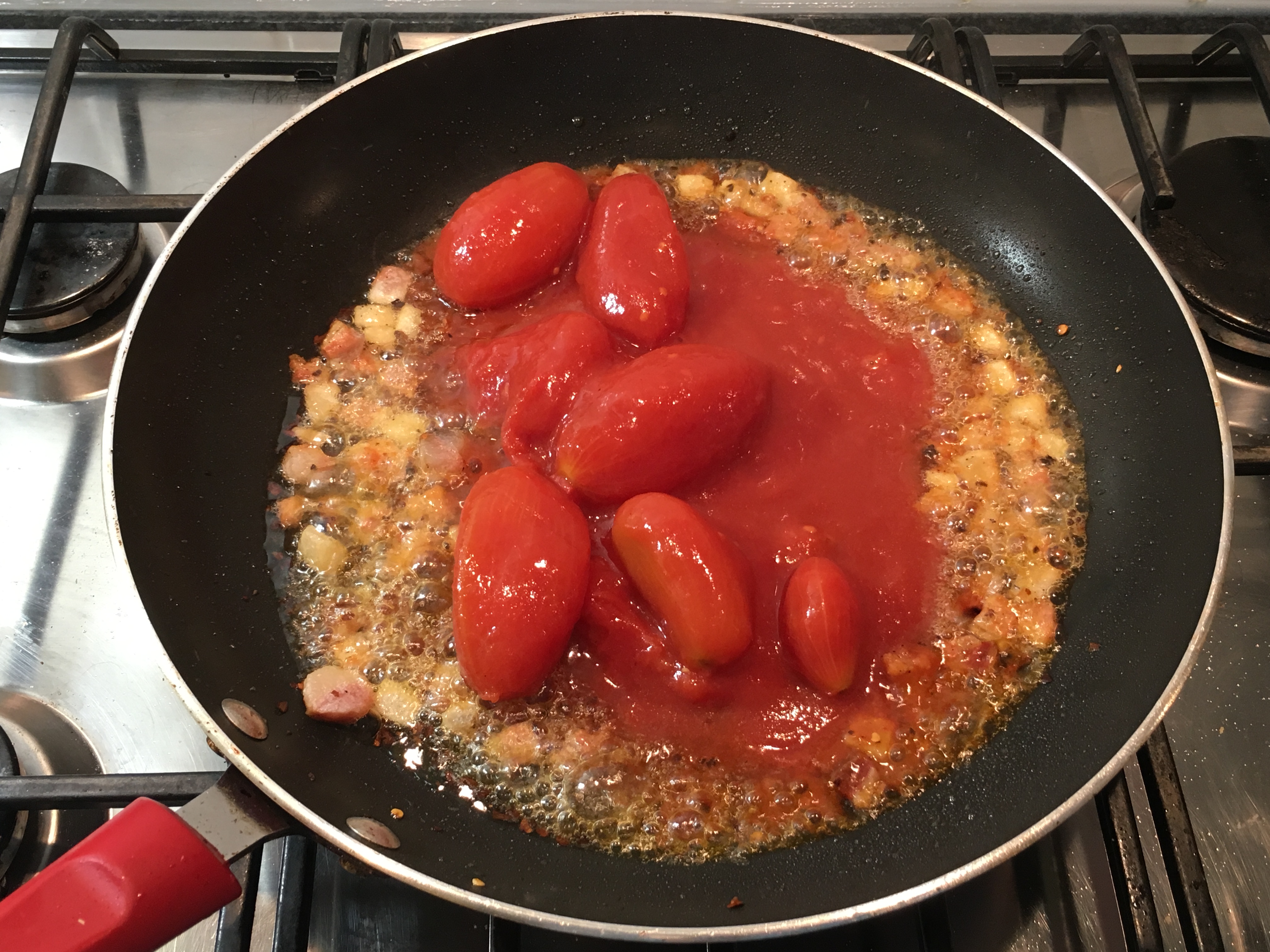


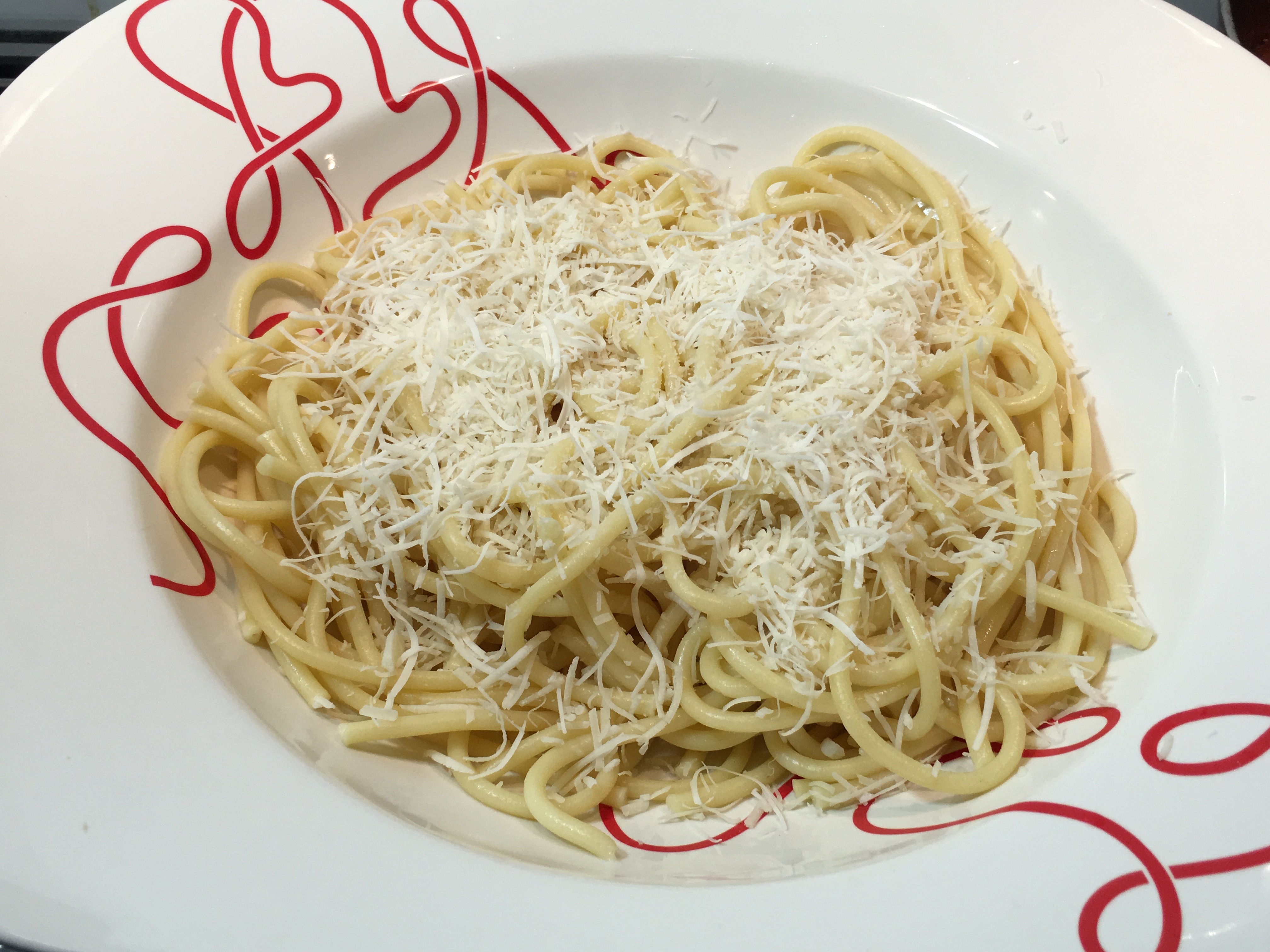

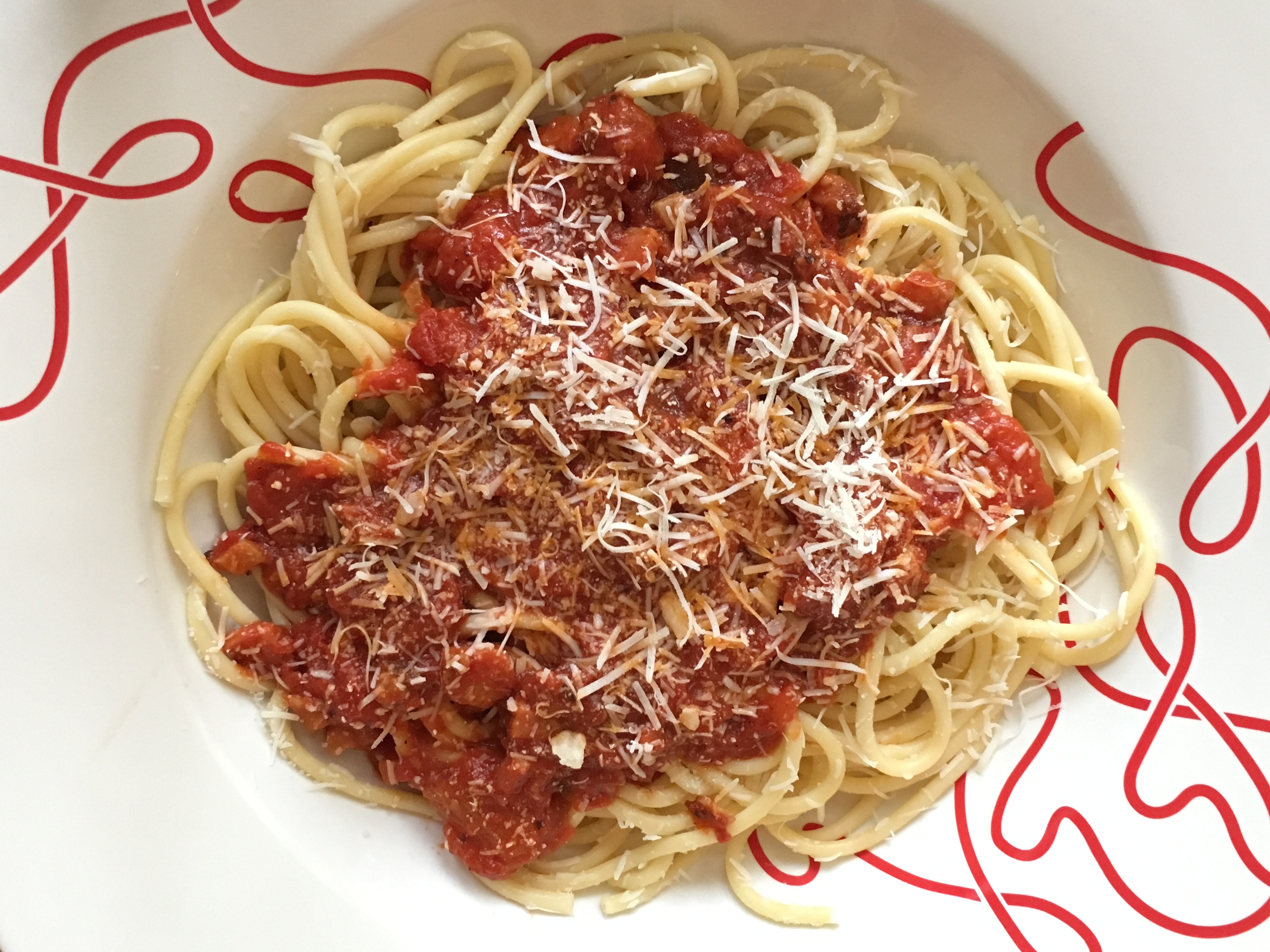



Trackbacks/Pingbacks